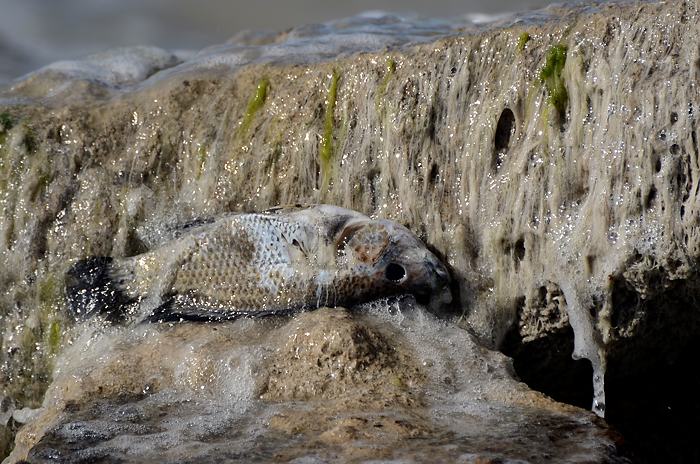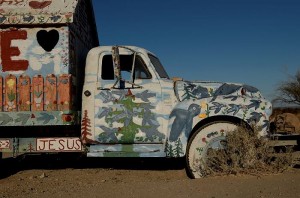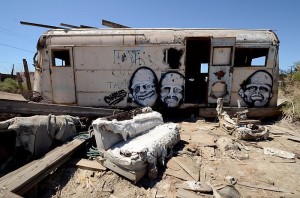Last weekend I taught Nikon School in San Diego with my friend Nick Didlick. When the school was over Sunday afternoon, we hopped in our rental car and headed east. For the last couple of years we’ve wanted to go to the Salton Sea, and this was our chance.
The Salton Sea is a unique body of water in southern California. Formed when the Colorado River flooded in the 1920s, it covers an area roughly 35 miles long and 15 miles wide. Shallow, it sits in the Colorado Desert below sea level. The area had a brief moment of glory in the 1950s when it was pitched to Californians as a vacation spot. But more floods, and increasing salinity that made it saltier than the ocean led to the area being largely abandoned.
Visitors today find a large lake with few people living around it, among many abandoned homes and housing projects. And dead fish. Lots of them. There’s life there too, as evidenced by the many birds that frequent the area (including lots of pelicans). But it’s the decay that catches the eye, and why Nick and I wanted to go there.
Leaving our hotel in El Centro at 4am, our first stop was the National Wildlife Refuge at the south end, for sunrise. We found dead trees, dead fish, cracked and dry shores and a constant dirt-filled wind. Then we started to circle the lake, up the east side first. That included a visit to Salvation Mountain, near Niland. It’s by Slab City, a former WWII Marine camp now used by RV’ers and squatters. You may have seen it in the film, “Into the Wild.” I won’t try to explain or describe Salvation Mountain. Google it if you’re
interested, but it’s quite a place for a photographer.If you visit, plan for the end of the day. The light would be better then.
From there we continued north, stopping at Bombay Beach. One area near the water has the remains of about a dozen homes and trailers, slowing melting into the ground. It’s desolate, hot and dry, and a great place to look for pictures.
Back on the road again, we rounded the north end, then down to Desert Shores, Salton Sea Beach and Salton City. More abandoned buildings, but signs of growth too, with some new homes. Perhaps the area will have a renaissance, but the long-term prospects for the sea don’t look good, and you’d have to like hot, dry, windy and isolated. Oh, and be able to ignore the smell of the dead fish. In places, though, it is beautiful.
We finished a bit after noon and headed west to spend the afternoon exploring Anza Borrego Desert State Park. There were some nice photo opportunities there too, but that’s for another post. By the time we got back to San Diego late Monday night, we’d been on the road for 19 hours and I’d shot about 1100 photos (using a Nikon D7000, D5100 and an IR converted D80). I tend to shoot a lot, preferring to use large cards (16GB) and make sure I’ve got the shot. After a quick review of the images Tuesday morning, that number was down to 600.
Will I visit the Salton Sea again? Probably. It’s unique, and that’s always a good thing for a photographer. Plus, there are some great sand dunes east of El Centro, and I’m looking forward to exploring them. That’s one of the things I love about being a photographer – it gives you a good excuse to go out and find interesting things. And if you’re lucky, they’ll make good pictures!




